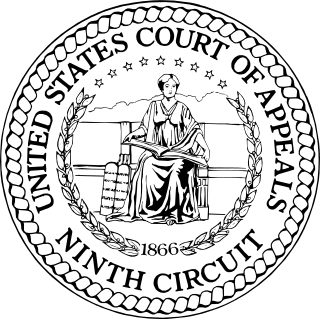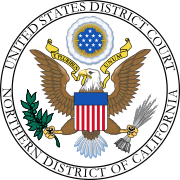The idea–expression distinction or idea–expression dichotomy is a legal doctrine in the United States that limits the scope of copyright protection by differentiating an idea from the expression or manifestation of that idea.

Broderbund Software, Inc. was an American maker of video games, educational software, and productivity tools. Broderbund is best known for the 8-bit video game hits Choplifter, Lode Runner, Karateka, and Prince of Persia, as well as The Print Shop—originally for printing signs and banners on dot matrix printers—and the Myst and Carmen Sandiego games. The company was founded in Eugene, Oregon, and moved to San Rafael, California, then later to Novato, California. Broderbund was purchased by The Learning Company in 1998.

In software design, the look and feel of a graphical user interface comprises aspects of its design, including elements such as colors, shapes, layout, and typefaces, as well as the behavior of dynamic elements such as buttons, boxes, and menus. The term can also refer to aspects of a non-graphical user interface, as well as to aspects of an API – mostly to parts of an API that are not related to its functional properties. The term is used in reference to both software and websites.

Apple Computer, Inc. v. Microsoft Corporation, 35 F.3d 1435, was a copyright infringement lawsuit in which Apple Computer, Inc. sought to prevent Microsoft and Hewlett-Packard from using visual graphical user interface (GUI) elements that were similar to those in Apple's Lisa and Macintosh operating systems. The court ruled that, "Apple cannot get patent-like protection for the idea of a graphical user interface, or the idea of a desktop metaphor [under copyright law]...". In the midst of the Apple v. Microsoft lawsuit, Xerox also sued Apple alleging that Mac's GUI was heavily based on Xerox's. The district court dismissed Xerox's claims without addressing whether Apple's GUI infringed Xerox's. Apple lost all claims in the Microsoft suit except for the ruling that the trash can icon and folder icons from Hewlett-Packard's NewWave windows application were infringing. The lawsuit was filed in 1988 and lasted four years; the decision was affirmed on appeal in 1994, and Apple's appeal to the U.S. Supreme Court was denied.
Software copyright is the application of copyright in law to machine-readable software. While many of the legal principles and policy debates a concerning software copyright have close parallels in other domains of copyright law, there are a number of distinctive issues that arise with software. This article primarily focuses on topics particular to software.

Kid Pix is a bitmap drawing program designed for children. Originally created by Craig Hickman, it was first released for the Macintosh in 1989 and subsequently published in 1991 by Broderbund. Hickman was inspired to create Kid Pix after watching his son Ben struggle with MacPaint, and thus the main idea behind its development was to create a drawing program that would be very simple to use.
Web scraping, web harvesting, or web data extraction is data scraping used for extracting data from websites. The web scraping software may directly access the World Wide Web using the Hypertext Transfer Protocol or a web browser. While web scraping can be done manually by a software user, the term typically refers to automated processes implemented using a bot or web crawler. It is a form of copying in which specific data is gathered and copied from the web, typically into a central local database or spreadsheet, for later retrieval or analysis.

Computer Associates International, Inc. v. Altai, Inc., 982 F.2d 693 is a decision from the United States Court of Appeals for the Second Circuit that addressed to what extent non-literal elements of software are protected by copyright law. The court used and recommended a three-step process called the Abstraction-Filtration-Comparison test. The case was an appeal from the United States District Court for the Eastern District of New York in which the district court found that defendant Altai's OSCAR 3.4 computer program had infringed plaintiff Computer Associates' copyrighted computer program entitled CA-SCHEDULER. The district court also found that Altai's OSCAR 3.5 program was not substantially similar to a portion of CA-SCHEDULER 7.0 called SYSTEM ADAPTER, and thus denied relief as to OSCAR 3.5. Finally, the district court concluded that Computer Associates' state law trade secret misappropriation claim against Altai was preempted by the federal Copyright Act. The appeal was heard by Judges Frank Altimari, John Daniel Mahoney, and John M. Walker, Jr. The majority opinion was written by Judge Walker. Judge Altimari concurred in part and dissented in part. The Second Circuit affirmed the district court's ruling as to copyright infringement, but vacated and remanded its holding on trade secret preemption.
Stern Electronics Inc. v. Kaufman, 669 F.2d 852, was a case decided by the U.S. Court of Appeals for the Second Circuit that ruled that a video game manufacturer, Stern Electronics, could copyright the images and sounds in a game, not just the underlying source code that produced them. The decision was one of the first to rule on the copyrightability of video games as an artistic work and one of a series of lawsuits in the early 1980s brought forth by video game manufacturers like Stern aimed at combatting the increasing number of knock-off video games on the market.
Lotus Dev. Corp. v. Borland Int'l, Inc., 516 U.S. 233 (1996), is a United States Supreme Court case that tested the extent of software copyright. The lower court had held that copyright does not extend to the user interface of a computer program, such as the text and layout of menus. Due to the recusal of one justice, the Supreme Court decided the case with an eight-member bench that split evenly, leaving the lower court's decision affirmed but setting no national precedent.

The Digital Millennium Copyright Act (DMCA) is a 1998 United States copyright law that implements two 1996 treaties of the World Intellectual Property Organization (WIPO). It criminalizes production and dissemination of technology, devices, or services intended to circumvent measures that control access to copyrighted works. It also criminalizes the act of circumventing an access control, whether or not there is actual infringement of copyright itself. In addition, the DMCA heightens the penalties for copyright infringement on the Internet. Passed on October 12, 1998, by a unanimous vote in the United States Senate and signed into law by President Bill Clinton on October 28, 1998, the DMCA amended Title 17 of the United States Code to extend the reach of copyright, while limiting the liability of the providers of online services for copyright infringement by their users.
Substantial similarity, in US copyright law, is the standard used to determine whether a defendant has infringed the reproduction right of a copyright. The standard arises out of the recognition that the exclusive right to make copies of a work would be meaningless if copyright infringement were limited to making only exact and complete reproductions of a work. Many courts also use "substantial similarity" in place of "probative" or "striking similarity" to describe the level of similarity necessary to prove that copying has occurred. A number of tests have been devised by courts to determine substantial similarity. They may rely on expert or lay observation or both and may subjectively judge the feel of a work or critically analyze its elements.
PrintMaster was a greeting card and banner creation program for Commodore 64, Amiga, Apple II and IBM PC computers.
The Abstraction-Filtration-Comparison test (AFC) is a method of identifying substantial similarity for the purposes of applying copyright law. In particular, the AFC test is used to determine whether non-literal elements of a computer program have been copied by comparing the protectable elements of two programs. The AFC test was developed by the United States Court of Appeals for the Second Circuit in 1992 in its opinion for Computer Associates Int. Inc. v. Altai Inc. It has been widely adopted by United States courts and recognized by courts outside the United States as well.
Structure, sequence and organization (SSO) is a term used in the United States to define a basis for comparing one software work to another in order to determine if copying has occurred that infringes on copyright, even when the second work is not a literal copy of the first. The term was introduced in the case of Whelan v. Jaslow in 1986. The method of comparing the SSO of two software products has since evolved in attempts to avoid the extremes of over-protection and under-protection, both of which are considered to discourage innovation. More recently, the concept has been used in Oracle America, Inc. v. Google, Inc.

Whelan Assocs., Inc. v. Jaslow Dental Laboratory, Inc. was a landmark case in defining principles that applied to copyright of computer software in the United States, extending beyond literal copying of the text to copying the more abstract structure, sequence and organization. The decision initiated a six-year period of heightened copyright protection for computer programs.

Roth Greeting Cards v. United Card Co., 429 F.2d 1106, was a Ninth Circuit case involving the copyright of greeting cards that introduced the "total concept and feel" standard for determining substantial similarity. Courts used this test in later cases such as Reyher v. Children's Television Workshop (1976).
Navitaire Inc v Easyjet Airline Co. and BulletProof Technologies, Inc., is a decision by the England and Wales High Court of Justice. The case involved a copyright infringement claim brought by Navitaire Inc. ("Navitaire") against EasyJet Airline Company ("EasyJet") and Bulletproof Technologies, Inc. ("Bulletproof") with regards to software used to construct an airline booking system. Curiously, it was not claimed that Defendant had access to the original source code or that Defendant's source code resembled Plaintiff's in any way.
The protection of intellectual property (IP) of video games through copyright, patents, and trademarks, shares similar issues with the copyrightability of software as a relatively new area of IP law. The video game industry itself is built on the nature of reusing game concepts from prior games to create new gameplay styles but bounded by illegally direct cloning of existing games, and has made defining intellectual property protections difficult since it is not a fixed medium.

Tetris Holding, LLC v. Xio Interactive, Inc., 863 F.Supp.2d 394, was a 2012 American legal case related to copyright of video games, confirming that a game's look and feel can be protected under copyright law. Tetris Holding is a company that holds the copyright to the original Tetris game from 1984 and licenses those rights to game developers. Xio Interactive is a game developer that released Mino in 2009, a mobile game based on the gameplay of Tetris. Mino was downloaded millions of times, and Tetris Holding filed a DMCA notice and eventually a lawsuit against Xio for copyright infringement.









